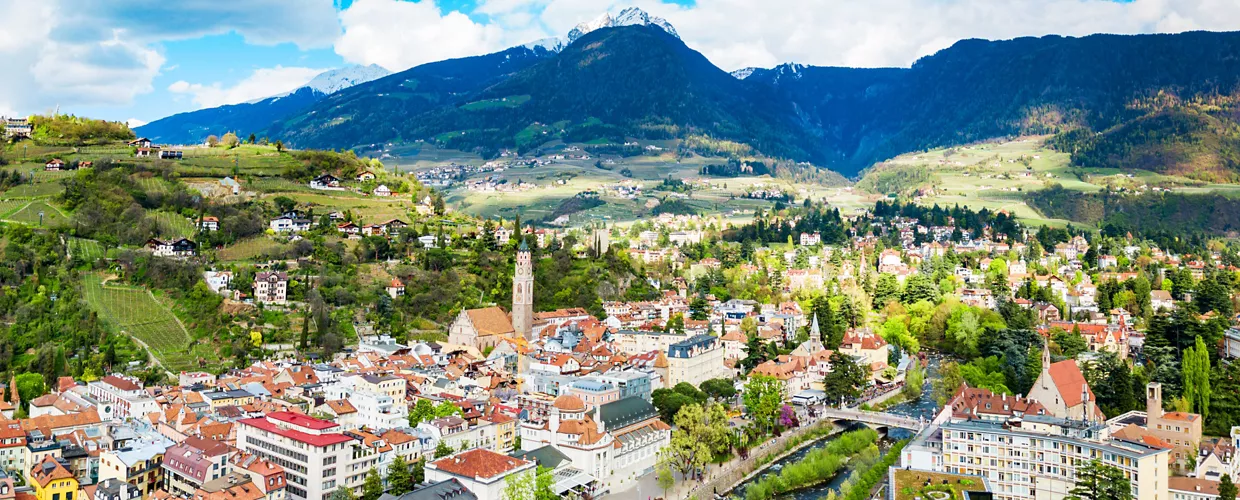This content was automatically translated. View the original text.

Overview
The second largest and most important city in South Tyrol, Merano lies along the banks of the Passeirio river, a few metres before its confluence with the Adige, in a wide and sunny alpine basin.
And it is its almost Mediterranean climate, despite its Alpine geography, that has made its fortune: already in the 19th century, the city was known as a fashionable destination, a favourite holiday resort of the Habsburg aristocracy and upper middle class. With its thermal baths and grand hotels assuring a relaxing stay, the town also offers a host of opportunities for fun, entertainment and even betting: including a casino and racecourse. The almost immediate success of Merano as a destination required train links from Vienna and Budapest, to meet the demands of wealthy travellers.
Today's Merano presents itself as a resort that, while retaining the allure of its prestigious past, has been able to adapt to contemporary tourism as an ideal destination for lovers of haute cuisine, wine, culture and music, wellness and sports.
Strolling along the town's main shopping streets, Corso della Libertà and Via dei Portici, you can see some of the beautiful historic buildings of Merano. Outside the train station, you walk past the Puccini theatre and the Kurhaus (home to cultural and food and wine events) until you reach the elegant, elaborately-decorated Cathedral of St Nicholas, whose bell tower watches over the city.
Just a few steps further on, you are surrounded by lush and verdant nature, as you walk along the banks of the River Passirio or through the botanical gardens of Trauttmansdorff Castle. If you're willing to go even higher, you can reach the panoramic walks that cut across the slopes of Mount Benedict, before heading back down to the old town for a visit to the stately castle of the House of Hapsburg.
Merano BZ, Italia